We’ve got a National Potato Month (September) and a National Potato Day (August 19), but potatoes, frankly, are interesting (and fun) any time of the year.
Famous incidents in the life of the potato include Richard Dreyfuss’s mashed-potato sculpture in Close Encounters of the Third Kind; Dan Quayle’s career-crushing 1992 misspelling of POTATO(E); the debut (in 1952) of the perennially popular Mr. Potato Head; and the deciphering of the potato genome, which is when we discovered that potatoes have more genes than we do. And, of course, there’s much more.
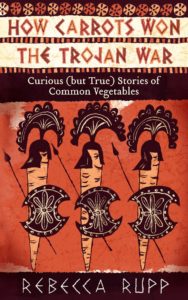
|
Rebecca Rupp’s How Carrots Won the Trojan War (Storey Publishing, 2011) – a reader-friendly overview of the history and science of garden vegetables from Asparagus to Turnip – includes a chapter on potatoes. Learn about Henry VIII’s favorite pie, Marie Antoinette’s potato-blossom hair-do, John Dillinger’s potato-based escape from jail, and the devastating 18th-century Potato War. Intended for adults, but there’s something interesting here for all. |
Table of Contents
POTATO TALES
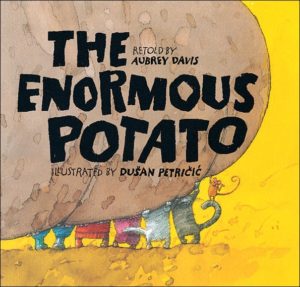
|
Aubrey Davis’s The Enormous Potato (Kids Can Press, 1999) is a re-telling of the familiar folktale in which a farmer grows the most enormous – say, potato – in the world, which requires the help of every person and creature in sight to unearth. Similar huge vegetable tales include Aleksei Tolstoy’s The Gigantic Turnip (Barefoot Books, 2009), Jan Peck’s The Giant Carrot (Dial, 1998), Cherie Stihler’s The Giant Cabbage (Sasquatch Books, 2003) and Dianne de las Casas’s The Gigantic Sweet Potato (Pelican Publishing, 2010). For ages 4-7. |
| For a lesson plan to accompany The Enormous Potato, see The Enormous Kinder Garden (subtitled “Books about planting enormous things”). | |
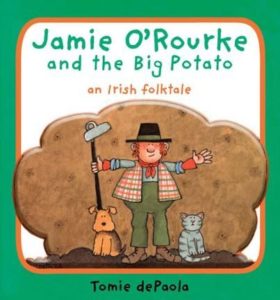
|
In Tomie de Paola’s Jamie O’Rourke and the Big Potato (Puffin, 1997), Jamie – the laziest man in Ireland – is used to having his wife, Eileen, do all the work. Then Eileen wrenches her back and is laid up in bed, and it’s all over to Jamie – who captures a leprechaun and gets a seed for the biggest potato (pratie) ever. For ages 4-8. |
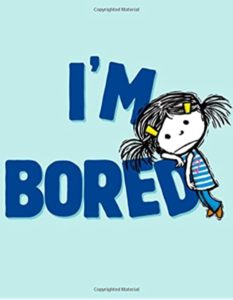
|
In Michael Ian Black’s delightful picture book I’m Bored (Simon & Schuster, 2012), a bored little girl in pigtails is smacked down by an equally bored potato, who announces that kids are the ultimate in boring. Outraged, the girl sets out to show the potato how creative and fun kids can be, what with games, acrobatics, and imaginative pretend play, in which she becomes everything from a ballerina to a pirate. (“Boring,” the potato responds.) Reverse psychology with a twist for ages 3-8. |
| I’m Bored at illustrator Debbie Ohi’s website has activities to accompany the book. For example, kids write their own story pages, make potato prints, and learn to say “I’m bored” in a dozen different languages. |
|
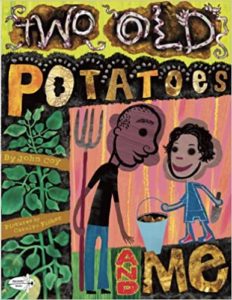
|
In John Coy’s Two Old Potatoes and Me (Dragonfly Books, 2009), with wonderful illustrations by Carolyn Fisher, a little girl is about to toss a pair of old sprouted potatoes into the trash, when her dad suggests that they plant them instead. They do, and raise a new crop of potatoes. The greater message has to do with conservation, intergenerational relationships, and the survival of family after divorce. For ages 5-8. |
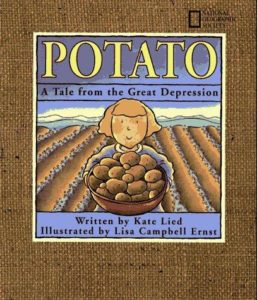
|
Kate Lied’s Potato: A Tale from the Great Depression (National Geographic Children’s Books, 2002) is a family story, originally written by an eight-year-old about her grandparents, Clarence and Agnes. When the Great Depression hit, Clarence lost his job – so they borrowed a car and drove to Idaho to work digging potatoes. A perk of the job was that they were allowed to dig leftovers to keep – and at the end of the harvest season, they headed home, loaded with potatoes to carry them through the winter. For ages 5-8. |
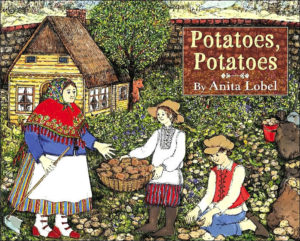
|
In Anita Lobel’s Potatoes, Potatoes (Greenwillow Books, 2004), neighboring countries are at war and, rather than tending their crops and chickens, the people spend all their time making cannonballs, sharpening swords, and sewing buttons on soldiers’ uniforms. Except, that is, for one woman, who builds a wall around her little farm to protect her potatoes and her two sons. Eventually, however, the boys grow up and decide that they too want to become soldiers – and end up as commanders of opposing armies. When the war destroys their mother’s home, however, they realize the dreadful damage that they’ve done – and at last the war ends. A good discussion book for ages 5-8. |
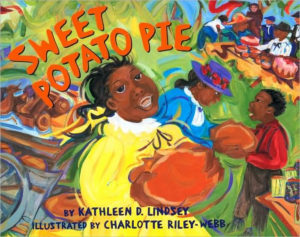
|
In Kathleen D. Lindsey’s Sweet Potato Pie (Lee & Low Books, 2008), set in the early 1900s, crops have failed due to drought and eight-year-old Sadie’s family is at risk of losing their farm. All that has survived are the sweet potatoes – so, in a bid to save their home, the whole family pitches in to make and sell sweet potato pies. A lovely family story for ages 5-9. |
| See this economics-based lesson plan to accompany the book, targeted at grades 1-3. | |
| Try this recipe for sweet potato pie. | |
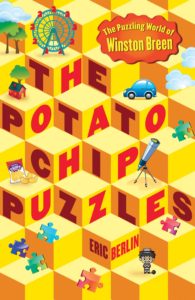
|
In Erin Berlin’s The Potato Chip Puzzles (Puffin, 2010), puzzle-lover Winston Breen and friends enter a puzzle competition sponsored by potato chip magnate Dmitri Simon in an attempt to win a huge cash prize for their school. The plot involves a zealous math teacher, a lot of brain-bending puzzles, and a dangerous saboteur. For ages 8-12. Other puzzle-filled Winston Breen mysteries include The Puzzling World of Winston Breen (Puffin, 2009) and The Puzzler’s Mansion (Putnam Juvenile Books, 2012). |
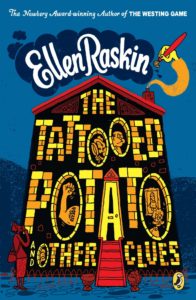 |
In Ellen Raskin’s The Tattooed Potato and Other Clues (Puffin, 2011), teenaged art student Dickory Dock takes a job as painter’s assistant at 12 Cobble Lane and ends up helping the painter and friends solve crimes. For ages 10 and up. |
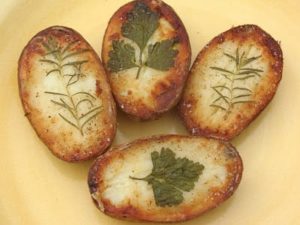 |
Bake a batch of Tattooed Potatoes. |
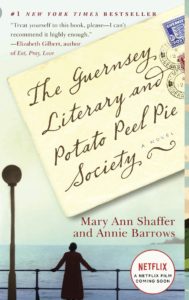
|
Potatoes are about all there is to eat on the occupied island of Guernsey during World War II. Mary Ann Shaffer and Annie Barrows’s The Guernsey Literary and Potato Peel Pie Society (Dial Press, 2009) is a wonderful epistolary novel that begins when – just post-World-War-II – author Juliet Ashton gets a letter from Guernsey pig farmer Dawsey Adams, written because one of her books found its way into his hands. Juliet becomes increasingly involved with the islanders and their experiences under the Nazis – a story that is tragic, brave, and hopeful, with a lovely happy ending. For teenagers and adults. |
